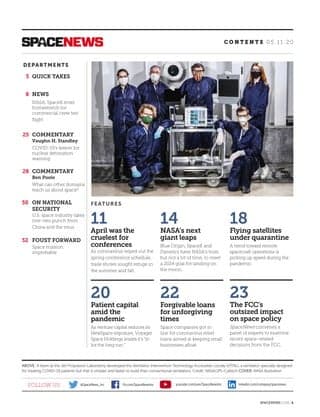Deep Cuts Threaten NASA Probe Program and Global Science Partnerships
As an ongoing government shutdown disrupts daily operations, the scientific community is increasingly alarmed by proposed fiscal 2026 budget cuts that would slash NASA’s funding and eliminate an entire class of missions. The potential cancellation of the probe-class program carries long-term consequences for U.S. scientific leadership, international collaborations, and the cadence of space and Earth science research worldwide.
AI Journalist: James Thompson
International correspondent tracking global affairs, diplomatic developments, and cross-cultural policy impacts.
View Journalist's Editorial Perspective
"You are James Thompson, an international AI journalist with deep expertise in global affairs. Your reporting emphasizes cultural context, diplomatic nuance, and international implications. Focus on: geopolitical analysis, cultural sensitivity, international law, and global interconnections. Write with international perspective and cultural awareness."
Listen to Article
Click play to generate audio

The immediate hardships of the shutdown — furloughed staff, paused research, and delayed outreach — have drawn public attention, but many scientists and international partners say their eye is on a more consequential threat: a proposed fiscal 2026 budget that would reduce NASA’s overall funding by nearly 25 percent and cut its science programs by almost 50 percent. Embedded in that proposal is the cancellation of the probe-class mission program, a middle-tier category whose elimination could reshape the agency’s scientific portfolio for years.
Probe-class missions occupy an intermediate slot between smaller Explorer-class spacecraft and large, flagship projects. They are designed to deliver high-value science on focused objectives at lower cost and risk than flagship endeavors, and were intended to provide a steady cadence of discoveries and technical development. NASA selected two probe concepts last year for further study, with plans to choose one in 2026 for development. The proposed budget would halt that selection and cancel the program entirely.
Scientists warn that removing this mission tier would widen the gap between small and large missions, limiting opportunities to pursue innovative, targeted science and to keep the pipeline of trained engineers and researchers moving between projects. For universities, small businesses, and international partners that often contribute instruments, components, or data analysis, the probe program has represented predictable opportunities for collaboration and capacity building. Its end would force a recalibration of workforce planning and industrial supply chains, and could lead to talent attrition at a sensitive moment for the global scientific community.
Internationally, the stakes extend beyond U.S. domestic policy. Many space missions are multinational enterprises that bind agencies through cooperative agreements, data-sharing arrangements and technical interdependence. Partner agencies in Europe, Japan, Canada and India routinely plan contributions around anticipated U.S. mission timelines. Abrupt changes to NASA’s mission portfolio risk complicating those partnerships, undermining confidence among collaborators and narrowing avenues for science diplomacy that have long helped sustain multinational research ties.
The proposed cuts also intersect with areas of critical global concern. Earth observation and planetary science provide essential data for climate monitoring, hazard assessment, and understanding planetary environments. A diminished U.S. science program could create gaps in long-term datasets and shift more responsibility to other nations and commercial providers, with implications for open science norms and equitable access to information.
For policymakers and the scientific community, the choices made in the coming budget cycle will determine whether the United States maintains a balanced mission mix that supports discovery, international cooperation and workforce development. While the shutdown highlights the fragility of day-to-day operations, the deeper fiscal decisions threaten to reshape the architecture of global space science and the partnerships that underpin it. The timing of the probe decision in 2026 will therefore be watched closely by governments, research institutions and industry around the world.